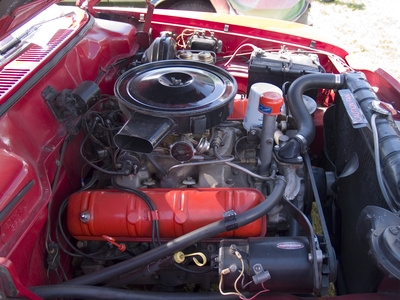
A carburetor provides the fuel-air mixture to the engine. The amount of air-flow through the carburetor will affect the amount of fuel delivered to the engine which affects the performance of the car. The airflow of a carburetor is measured in cubic feet per minute (CFM) and it must be matched to the needs of the engine. The size, efficiency, and maximum revolutions per minute (RPM) of your engine all affect the required CFM of your carburetor.
Find the displacement of your engine in cubic inches (CID). Determine the maximum RPM for your car. For example you may have 450 CID with a maximum RPM of 5,000.
Check the volumetric efficiency (VE) of your engine. If you don't know, you can assume that it's about 80 percent since most street cars are designed to that level of efficiency.
Multiply the CID by the maximum RPM and divide that product by the product of 3,456 and the VE. For example you would multiply 450 by 5,000 to get 2,250,000 and then multiply 3,456 by 80 percent to get 2,764.8. Then divide 2,250,00 by 2,764.8 to get the CFM required: 813.8.
Select a carburetor that will produce 110 percent to 120 percent of the required CFM. For example with a required CFM of 813.8 you would select a carburetor that can produce between 895 and 975 CFM.